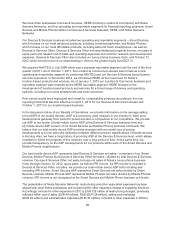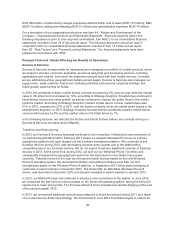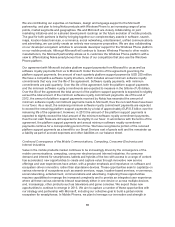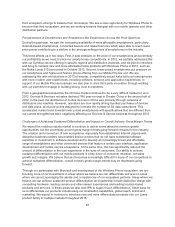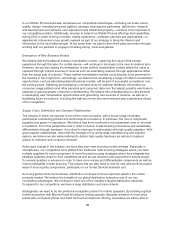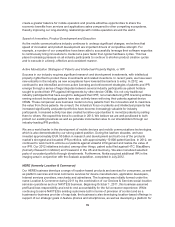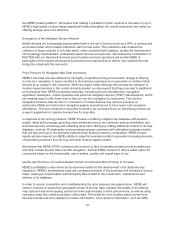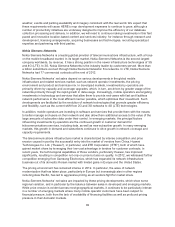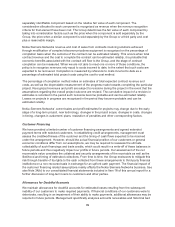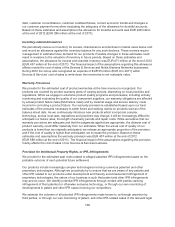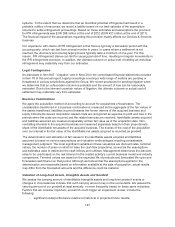Nokia 2012 Annual Report Download - page 92
Download and view the complete annual report
Please find page 92 of the 2012 Nokia annual report below. You can navigate through the pages in the report by either clicking on the pages listed below, or by using the keyword search tool below to find specific information within the annual report.the HERE location platform. We believe that making it possible for other vendors to innovate on top of
HERE’s high quality location-based assets will further strengthen the overall experience and make our
offering stronger and more attractive.
Emergence of the Intelligent Sensor Network
Mobile devices are increasingly being enabled with a rich set of sensors such as a GPS, a camera and
an accelerometer which enable interaction with the real world. This interaction also enables the
collection of large volumes of rich data which, when combined with analytics, enable the development
of increasingly sophisticated, contextually-aware devices and services. We believe the combination of
NAVTEQ with our Devices & Services social location services operations will enable HERE to
participate in this industry development and seize new opportunities to deliver new experiences that
bridge the virtual with the real world.
Price Pressure for Navigable Map Data Increasing
HERE’s net sales are also affected by the highly competitive pricing environment. Google is offering
turn-by-turn navigation in many countries to its business customers and consumers on certain mobile
devices at no charge to the consumer. While we expect these offerings will increase the adoption of
location-based services in the mobile products market, we also expect that they may lead to additional
price pressure from HERE’s business customers, including device manufacturers, navigation
application developers, mobile operators and personal navigation device (“PND”) manufacturers, which
are seeking ways to offer lower-cost or free turn-by-turn navigation to consumers. Turn-by-turn
navigation solutions that are free to consumers on mobile devices may also put pressure on
automotive OEMs and automotive navigation system manufacturers to have lower cost navigation
alternatives. This price pressure is expected to result in an increased focus on advertising revenue as
a way to supplement or replace license fees for map data.
In response to the pricing pressure, HERE focuses on offering a digital map database with superior
quality, detail and coverage; providing value-added services to its customers such as distribution and
technical services; enhancing and extending its product offering by adding additional content to its map
database, such as 3D landmarks; and providing business customers with alternative business models
that are less onerous to the business customer than those provided by competitors. HERE’s future
results will also depend on HERE’s ability to adapt its business models to generate increasing amounts
of advertising revenues from its map and other location-based content.
We believe that HERE’s PND customers will continue to face competitive pressure from smartphones
and other mobile devices that now offer navigation, but that PNDs continue to offer a viable option for
consumers based on the functionality, user interface, quality and overall ease of use.
Quality and Richness of Location-Based Content and Services Will Continue to Increase
HERE’s profitability is also driven by its expenses related to the development of its database and
expansion. HERE’s development costs are comprised primarily of the purchase and licensing of source
maps, employee compensation and third-party fees related to the construction, maintenance and
delivery of its database.
In order to remain competitive and notwithstanding the price pressure discussed above, HERE will
need to continue to expand the geographic scope of its map data, maintain the quality of its existing
map data and add an increasing amount of new location-based content and services, as well as using
innovative ways like crowd sourcing to collect data. The trends for such location-based content and
services include real-time updates to location information, more dynamic information, such as traffic,
91



